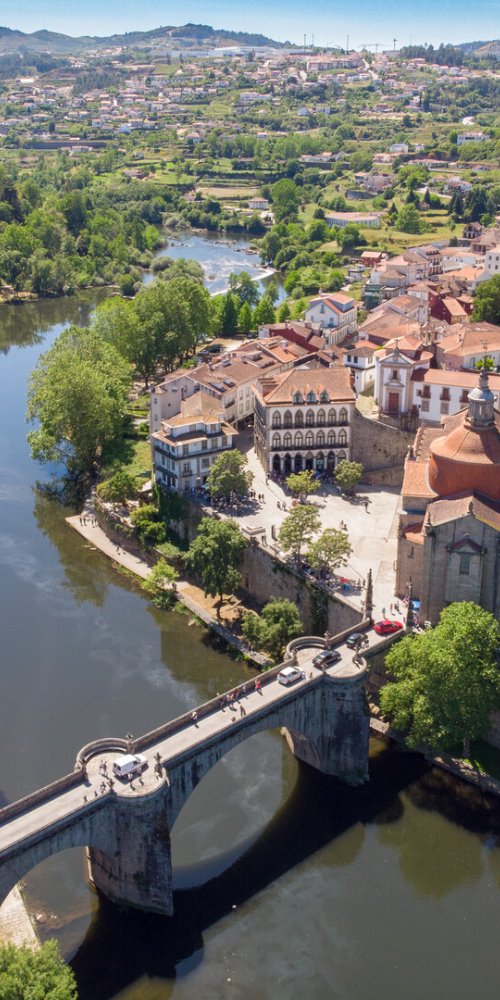

Picture this: the melodic beep of ticket barriers as you step onto Amarante’s bustling metro, the gentle chime of trams weaving through cobblestone streets, and a tapestry of conversations swirling around you - in Portuguese, English, Spanish, French, and more. The hum of daily life pulses through this charming city, where every journey on public transport reveals new stories and secret corners. Whether you’re rushing to Mercado Municipal for fresh produce or relaxing by the Tâmega River, Amarante’s transport rhythms invite you to explore without worry, swapping taxi queues for swift buses and trams gliding through historic quarters.

Exploring Amarante on public transport isn’t just convenient - it’s smart. When I first climbed the cathedral tower, I noticed how limited the parking spots were near the city centre. Taking the metro or tram saved me time and the hassle of hunting for a spot. Public transport here offers great value compared to taxis or renting a car, especially if you’re hopping between the riverfront, the historic old town, and outlying parks.
Traffic congestion in peak hours can chew up precious sightseeing time, but buses and trams have priority lanes, slicing through the city’s pulse with speed and regularity. These vehicles run frequently, so skipping a ride means just minutes between connections.
Beyond practicality, public transport in Amarante, PT, boasts a greener footprint. Electric trams and metro lines mean you’re cutting carbon emissions on your journeys, helping to preserve the city’s idyllic scenery and fresh air. Embracing the buses and bike-shares also fosters sustainable tourism, so your visit leaves a lighter footprint.
All told, using public transport lets you enjoy Amarante at a relaxed pace without worrying about parking or lost directions. You’ll find it’s both a budget-friendly and eco-friendly way to dive deep into the city’s charms while mingling with locals in everyday motion.
| Mode | Lines | Peak Frequency | Night Service |
|---|---|---|---|
| Metro | 2 (Red & Green) | Every 10 minutes | None |
| Tram | 3 (Routes A, B & C) | Every 12 minutes | Route A til midnight Fridays & Saturdays |
| Bus | 8 lines covering city & outskirts | Every 15-30 minutes | Limited night buses on weekends |
| Bike-Share | Stations in 5 central locations | N/A | Available 24/7 |
Amarante’s public transport network is compact yet comprehensive, designed to connect key neighbourhoods efficiently. The metro’s two lines cover most major hubs, linking the station to residential and commercial districts. Trams add charm and access to tourist hotspots, while buses provide broader reach to parks, suburbs, and adjoining towns. The bike-share system complements transit by offering last-mile flexibility and a healthy, scenic alternative for short trips.
Understanding peak hours in Amarante can save you both money and time. Morning rush tends to be 7:00 to 9:30 AM and evening 5:00 to 7:30 PM on weekdays. During these periods, vehicles are busiest, and you may find standing-room only, especially on metro lines.
Off-peak travel offers a more relaxed experience; seats are plentiful, and you can enjoy scenic views during tram rides without jostling crowds. Ticket prices remain the same throughout, but certain passes provide extra perks or daylight unlimited use aligning with off-peak hours.
Some buses and trams elevate frequency during rush hour to accommodate commuters, but outside this, wait times can stretch slightly. Planning journeys either side of peak windows ensures a smoother ride.
When I first bounced onto a crowded tram during Monday morning rush, I learned to time walks to the station just after 9:30 AM. That daily habit now doubles my sightseeing joy and cuts travel stress considerably.

Most metro stations and trams in Amarante are fully accessible, featuring ramps, low-floor boarding, and reserved spaces. Buses are progressively upgrading fleets to kneel and fold seats. If you need assistance, informing the transit authority ahead can help ensure priority boarding.
Travelling with prams is straightforward on trams and metros, which have dedicated spaces for prams and strollers. Elevators and ramps at stations ease movement, though bus accessibility varies - boarding with smaller foldable prams is recommended for buses.
If you arrive or depart via Porto’s airport, linked to Amarante by metro and bus routes, you’ll find luggage areas on transport vehicles and storage racks on trams. Avoid peak hours with heavy bags to ensure a less crowded trip.
Absolutely. Tickets are available at metro and tram stations, many bus stops via machines, onboard from drivers (cash only for some lines), or through the official mobile app. The process is straightforward once you’re familiar with the ticket types.
Yes. Single tickets and passes are valid across metro, tram, and bus services within their time window, making transfers seamless and cost-effective.
Route maps are displayed at stops and available on the Amarante Transport website and app. Tram routes A, B, and C each serve distinct neighbourhoods and major attractions, with frequent schedules every 10 to 12 minutes during peak times.
The 24-hour and 72-hour unlimited passes offer excellent value for visitors planning multiple trips daily. The City Card adds cultural perks, enhancing your visit beyond transport alone.
Public transport in Amarante, PT, unlocks the city’s vibrant heartbeat with ease and eco-friendly charm. Whether you’re a first-time visitor or returning, mastering the metro, tram routes Amarante, PT, and bus networks lets you glide through stunning historic streets, scenic riverbanks, and buzzing marketplaces without fuss. If you’ve enjoyed these tips, I’d love to hear your stories or questions - drop a comment below or sign up for our travel newsletter to keep discovering Portugal’s best-kept transport secrets.

Additional articles from our network with useful insights about Amarante.